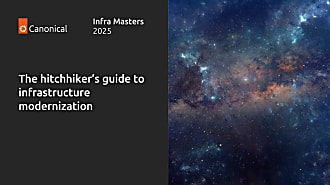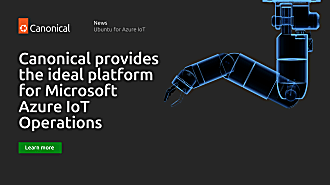Canonical
on 7 September 2020
How Canonical remotely delivers and supports customer cloud deployments
The widespread shift to remote working in response to the COVID-19 pandemic has been a disruptive change for countless businesses; some 13% of organisations say they have faced major disruption (1). But at Canonical, remote working has long been the status quo for many of our teams. In spite of the challenging circumstances in which we all find ourselves, Canonical has been able to continue to operate and support our customers despite their working practices undergoing significant changes. Here’s some of our observations and learnings to date.
Business as usual
Remote cloud delivery and support has always been very much the norm for Canonical, and we have continued to manage customer deployments globally. On the technical side, our engineers use VPNs to access customer environments and handle coding, configuration, and maintenance. In the past, some clients have preferred that engineers work onsite, but it has never been a requirement on our side. Tasks that might previously have been performed face-to-face, such as low-level design, are now being done remotely.
Likewise, our project management team has always worked remotely, and so there has been no impact on our ability to plan deployments, coordinate with engineers and customers, and track issues. What’s more, with project managers distributed across three global regions and time zones, we’re able to support customers around the clock.
We have only encountered a couple obstacles over the last few months. The first one is reduced access to clients due to customers being locked out of their offices early on. According to 451 Research, this has been a common issue for organisations during the pandemic. In a survey with businesses around the impact of Coronavirus, 451 Research found that nearly three quarters (72%) of organisations are experiencing or have experienced reduced access to clients or prospects.
The second obstacle encountered is related to hardware. Supply chain disruption can make it difficult for customers to get hold of hardware, and installation naturally requires an on-premises datacentre visit. That being said, so long as the hardware is already in place, we’re able to execute next steps without any onsite presence.
Remote working leads to faster cloud delivery
Working with our customers, we’ve actually exceeded our standard cloud delivery speed. This is due in large part to the new efficiencies that customers are unlocking through remote working. According to 451 Research, initially, 64% of companies were expecting to experience employee productivity impacts with the pandemic (2), but by June 2020, this fear had gone down to 31%.
At Canonical, we’re actually finding that clients can be more focused now than they could be in the office. There are fewer distractions, and less decision-by-committee as people learn to be more efficient in their communications. In an office setting, it’s all too easy to have a meeting, and then a follow-up discussion, and then loop in one more stakeholder, and so on. But working remotely, customers are messaging the relevant colleagues from the outset and making faster, more effective decisions.
Additionally, the convenience of remote working gives people greater flexibility to accommodate time zone differences, leading to fewer delays as we wait for key information or sign-offs.
Our experience with remote working is enabling us to help our clients get acclimatised and more rapidly realise the benefits of the new way of working. Check out our previous blog in which we shared our best practices for a successful remote team in the world of cloud delivery.
- According to 451 research
- As of March 2020



